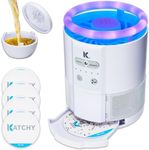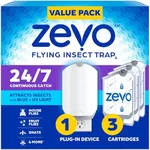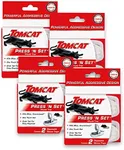Best Indoor Fly Traps
From leading brands and best sellers available on the web.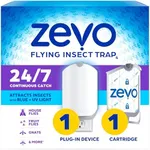
ZEVO
8%OFF
Zevo Flying Insect Trap & Cartridge - Plug in Fly Trap & Indoor Bug Catcher for Gnats, House & Fruit Flies - Mess-Free - Use in Any Room - Uses Blue & UV Light (1 Plug in Device & 1 Cartridge)
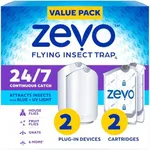
ZEVO
Zevo 2 Flying Insect Traps & 2 Refill Cartridges - Plug in Fly Trap & Indoor Bug Catcher for Gnats, House & Fruit Flies - Blue & UV Light Technology, Mess-Free Alternative to Bug Zapper
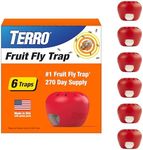
Terro
35%OFF
Terro Fruit Fly Traps for Indoors (6 Pack) + 270 Days of Lure Supply
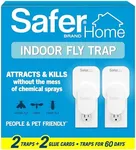
Safer
24%OFF
Safer Home Indoor Plug-in Fly Trap - SH502-2SR - Effective Fruit Fly Traps for Indoors, Gnat Traps for House Indoor, 800 Total Sq Ft Protection - 2 Devices + 2 Glue Cards

Safer
39%OFF
Safer Home Indoor Plug-In Fly Trap - SH502 - Effective Fruit Fly Traps for Indoors, Gnat Traps for House Indoor, 400 Sq Ft Protection - Style: 1 Device + 2 Glue Cards

VEYOFLY
19%OFF
VEYOFLY Fly Trap Indoor, Fruit Fly Traps for Indoors Flying Insect (2 Device + 6 Refills) Gnat Traps for House Indoor, Bug Zapper Indoor, Gnat Killer Catcher & Fruit Fly Killer Light Plug in
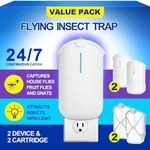
Husaco
20%OFF
2 Flying Insect Traps & 2 Cartridges - Compatible with ZEVOM364A Refill - Plug in Fruit Fly Trap for Indoor - Bug Catcher for Gnats, House & Fruit Flies - Use in Any Room (2 Device & 2 Cartridges)
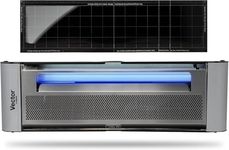
Catchmaster
20%OFF
Catchmaster Vector Plasma One Trap, Compact UV Light Fly Traps for Home, Gnat Traps for House Indoor, Shatterproof Bulbs, UV Lamp Insect Killer, Silent Bug Light for Deli, Bars, Kitchen & Trash Rooms
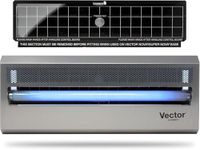
Catchmaster
5%OFF
Catchmaster Vector 15, UV Light Fly Traps Indoor for Home, Electric Gnat Traps for House Indoor, Shatterproof Bulbs UV Lamp Fly, Insect & Mosquito Killer, Silent Bug Light for Kitchen, Shed, Garage
Our technology thoroughly searches through the online shopping world, reviewing hundreds of sites. We then process and analyze this information, updating in real-time to bring you the latest top-rated products. This way, you always get the best and most current options available.

Most Popular Categories Right Now
